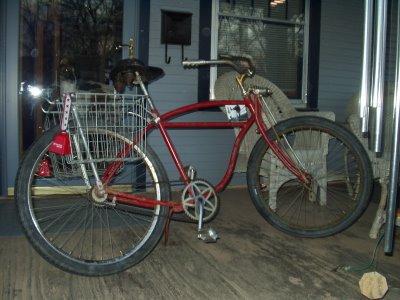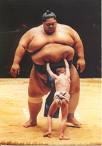Wednesday, November 29, 2006

Tuesday, November 28, 2006
New York Dolls - Dance Like a Monkey
i love creative animation, and this is among the best i've seen in a while. it's not as involved as the peter gabriel video, "sledgehammer"
www.youtube.com/watch?v=f8H6jp2ZgGg
but, it's good! enjoy...
Sunday, November 26, 2006

Tuesday, November 21, 2006
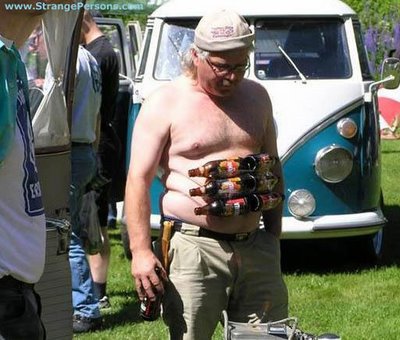
after . . .
what's the big deal??? it's just a little beer, weed, and hooker spit?
[i may need help converting this to a 300-slide power point presentation, but i'm working on it. lou: it's gonna take LOTS of money. cash: jacksons and hamiltons.]
more to follow...
Monday, November 20, 2006
 the word on the street is that a couple of "a" samples came back positive after last saturday's cranksgiving benefit for the food bank of iowa, sponsored by mars cafe, yankee doodle dandy tattoos, and rasmussen's bike shop. we're not a french blog, so i'm not going to disclose at this point the names on the "a" samples in question, but things are looking a little hazy for two of the locals. and that's all i'm going to say about THAT - for now. leave your speculative guesses in the comments section.
the word on the street is that a couple of "a" samples came back positive after last saturday's cranksgiving benefit for the food bank of iowa, sponsored by mars cafe, yankee doodle dandy tattoos, and rasmussen's bike shop. we're not a french blog, so i'm not going to disclose at this point the names on the "a" samples in question, but things are looking a little hazy for two of the locals. and that's all i'm going to say about THAT - for now. leave your speculative guesses in the comments section.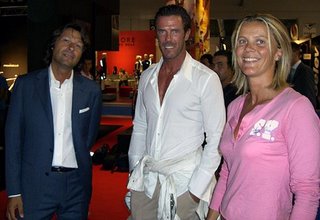 faces in the crowd? who can name these three bike fans shown above, enjoying a break from the latest monday night fixie ride about town. shown here, the three visitors to capitol city's burgeoning cycling scene are enjoying cold cans of schlitz at the locust street tap. leave your guesses in the comments section.
faces in the crowd? who can name these three bike fans shown above, enjoying a break from the latest monday night fixie ride about town. shown here, the three visitors to capitol city's burgeoning cycling scene are enjoying cold cans of schlitz at the locust street tap. leave your guesses in the comments section.
. . .
 and finally, which local green team is rumored to have inked a deal with lovely karina which will have her slipping into and out of green skinsuits all season long during 2007? click on her speedo to have a clue! and that's all i'm going to say about that - for now.
and finally, which local green team is rumored to have inked a deal with lovely karina which will have her slipping into and out of green skinsuits all season long during 2007? click on her speedo to have a clue! and that's all i'm going to say about that - for now.i am SOOO excited about next season!!! keeping my ear to the ground; i'll be back next time with more hot scoops.
A few simple tips to racing with your brain, not just your legs:
Many competitive cyclists lack an understanding of the basics of road racing. This isn’t a criticism so much as a comment on the lack of organized teaching in American cycling. There are countless books and articles on how to train, but all those intervals are useless if you are riding the entire race on the wrong side of the field and attacking on the downhills. There are also upper category riders who, despite their strength and abilities, could use a primer on racing basics. It’s not uncommon to see a Cat. II racer pull off to the wrong side in a paceline. I offer the information below as lessons that I have learned over the years. I’m not a particularly accomplished racer, but I’ve found this information helpful in getting me through races against better riders, and in adding to my enjoyment of racing. I hope it does the same for you.
ANTICIPATE THE WIND
First things first: Figure out where the wind is coming from. Then visualize the course and where the wind is in relation to the course. Anticipate the wind, and position yourself accordingly. In many instances, your position relative to the wind is far more important than your fore-aft position in the peloton. Use corners to switch sides of the field. You may sometimes want to ride in the wind temporarily, if it means you’ll have shelter for a longer stretch exiting a turn.
RIDE PROPER PACELINES
Pull off into the wind. This one drives me crazy. If done properly, the lead rider does his turn, then pulls off into the wind and fades to the back of the group, shielding the riders moving up in the line in the process. If done improperly, the riders moving up in the line are pulling into the wind before their turn and then resting as they slow down – a total waste. It’s very simple: Pull off into the wind.
Do not accelerate at the front. After the lead rider pulls off, he should slightly decelerate. The second rider should maintain pace (watching your speedometer is helpful). It’s the lead rider ending his turn who dictates the pace of rotation. The second rider should not storm past, by sprinting or accelerating quickly. The wind-breaking efficiency of a paceline is ruined if energy is wasted with riders constantly changing pace. You can increase your speed much more effectively and efficiently by subtly elevating the speed as a group.
Draft while going backwards. On a more leisurely ride, or when an attack first goes away, people can take long turns as the front. But once the group has settled in at speed, the paceline should be a steady rotation. This allows for maximum speed at minimum effort. Here’s how it should work: The lead rider (Rider A) should pull just until his rear wheels clears the front wheel of the rider who has just taken a turn (Rider B). The when Rider A pulls off and starts floating backwards, Rider B is getting a draft off of him. Some folks think they are doing the group a favor by taking long, hard pulls. You only accomplish two things with long, hard pulls: You break the paceline’s rhythm, and you completely flick the guy who pulled before you as he has no one to draft. Be smooth. If you follow the rules for pacelines above, your paceline should not consist of a guy pulling super hard and then sitting up and going right to the back. It should consist of guys making efforts just a hair above their limits for the short time they are in the wind, then making long steady efforts a hair below their limits, drafting as they move up the line and drafting as they move back.
CONSERVE ENERGY
Conserving energy is the most important thing that you can do, especially in longer races. Play a game with yourself within each race to see how little of an effort you can make. Think of your body as a bank account with $100. You must pay $1 for every minute of steady riding. But you have to pay $5 for every minute of hard accelerating. Typically, the rider who wins is the one with the most money at the end of the race – when it can all be spent with it counts most. Here are ways to conserve energy.
Look ahead. See what the riders at the front are doing. If they are sitting up, then there’s no reason to charge into the back of the field only to have to slam on your brakes. This is especially true out of corners. Conversely, if you see riders starting to attack and you know the pace is going to increase, you can gradually increase your pace instead of having to rapidly react when you notice the rider in front of you take off.
Don’t brake unless necessary. Braking means one or two things: That you went too hard earlier, or that you’ll have to accelerate after whatever you’re breaking for. In either event, braking usually means wasted energy.
Do not accelerate into dead air. If you need to move up, find a wheel to follow. Pulling out of line and sprinting into a wall of air is a waste of energy.
Ride the wave. You can see patterns in most races, especially circuit courses and criteriums. You see places where the field will accelerate and places where they sit up. Figure out those patterns and take advantage of them. If you know of a section where the pace will likely increase, position yourself toward the front before that spot, then let yourself float back during the acceleration if necessary. This way you can maintain a steady $1 pace while everyone else is spending $5. This theory works well with hills, as you can start a climb in the front, make less of an effort as you float back and arrive at the top still in the field. Conversely, if you know there is a slow section, use that time as a chance to improve your position in the field.
STOP PULLING FOR NO REASON
One of the main tactical differences between the Pro/Cat. I-II races and all other races is that no self-respecting Cat. I would take a hard pull without good reason. Conversely Cat. IV races often play out with everyone sitting around until someone attacks, then everyone killing themselves to catch the poor guy, then everyone sitting around again.
Save your big efforts to either attack or to bridge to a break. Don’t make a big effort just to give all the other riders a free ride. Plus, if you want to ever be in a successful break-away, you cannot contribute to the chase-at-any-cost mentality. If there are knuckleheads who want to ride like lemmings, let them. Then when you counterattack, they’ll be too tired to chase you.
Remember that there are more enemies in the pack – and on your wheel if you are pulling – than there are up the road. If someone is going to beat you, at least give a chance to the rider up the road making the effort and not to the passive riders taking advantage of your hard work.
ATTACK WHEN IT’S HARD
Anyone can attack when it’s easy. Anyone can attack downhill. And anyone can attack in a tailwind. If you feel fantastic and pace is easy, don’t bother attacking, because there are 99 other riders who feel as great as you. The key to a successful attack is to break the will of the other riders. It’s not easy to break the will of someone who’s been coasting for the last 5 minutes. If you are fit, you want to attack when it’s hard. If you’re suffering and you’re one of the strongest riders, they you have to suspect that the others are really suffering. That’s when they’re ripe for the cracking. These opportunities usually occur in crosswinds, on hills and at the end of races. Sometimes, though, it helps to attack when it’s easy – it makes the race harder. You can attack at the beginning of races or when the pace slows, just don’t make a full commitment to those efforts. Jumping and then cruising at 80 percent isn’t that draining, but it can stir up the field and induce counterattacks. Being off the front when that happens also allows you to slip back into the front of the field and into a good position for a counterattack with a real effort.
RIDE LIKE A TEAM
While a ProTour team giving a sprinter a 3km lead-out is quite a sight to see, team racing at the lower categories need not be so involved. There are a few simple ways though for teammates to effectively assist each other.
Counter-attack each other. If your teammate is in a break that gets caught and you do not counterattack, it is an insult – their efforts caused the chasing riders to tire while you sat on. That’s exactly the situation you’re looking for as a rider and as a team. Don’t let that effort go in vain. Counter. Even if you get caught, the stage is set for another teammate to attack and hit the pack again.
Give a leadout when it makes sense. Leadouts are often a waste of time at the lower levels. If you have 2 guys strong enough to both be at the front, you’re usually best served by sprinting and getting 2 results. There are exceptions: If you’re both out of position, sacrifice one rider to get the other into position. If it’s a tricky or dangerous finish, or if you are unsure about where to start the sprint, send one teammate – he might win, or if it’s too early, he might deliver his teammate to just the right spot.
SPRINTING
Sprint early. Most new riders wait too long and find themselves in the middle of a mess. You’re usually better off going early and avoiding the chaos. Even if you get passed and finish 5th, it’s better than being trapped and finishing 12th. Or worse yet, ending up on the pavement. Also, you’ll never know how far you can sprint until you’ve gone too early a couple of times. Once you’ve seen how far you can go before you blow, then you can make the necessary adjustments based on wind, terrain and circumstances.
Pick the right gear. You are attempting to accelerate as quickly as possible and then hold you speed as along as possible. Unless you are J.J. Haedo, you can do neither in the 11-tooth cog. Sprint in a gear in which you can accelerate and then shift. Also once you are up to speed, do not be afraid to sit down and spin. You are much more aero seated, and in a long sprint you can often get a few more RPM’s out of you gear while in the seated position.
*Article written by & stolen from: Bill Laudien who is the former director of Sportsbook.com pro team. I suspect he was never really that good, or I'd have heard of him. But he sure writes purty.
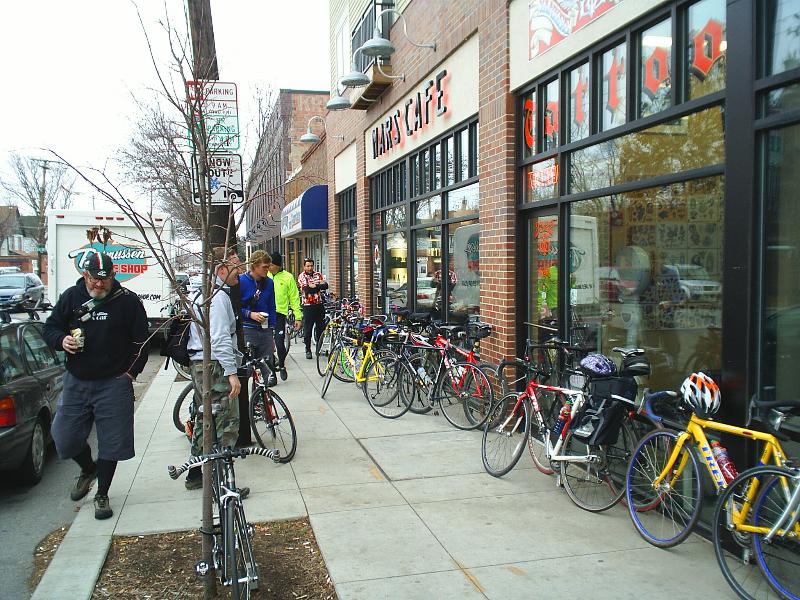 thanks for letting me steal the photo, squirrel! i wish EVERY shop in des moines always looked like this.
thanks for letting me steal the photo, squirrel! i wish EVERY shop in des moines always looked like this.Sunday, November 19, 2006
and speaking of old steel . . .
 ace mechanic extrordinaire fry guy delivered my latest recycled bike, seen above. it was a late 60s 3-speed racer [it even says so on the chain guard] that i wanted to convert to a fixed gear. i found it on the curb down the street a few years back, no saddle or seat post, but it DID have a very cool am radio headlight on the handlebars. couldn't be saved, though. it now has 1974 campy highflange 36-spoke hubs laced traditionally 3-cross for stiffness [can you feel it?] and 165 mm shimano cranks, and the original rear brake caliper. the original fenders and chainguard have been retained, so i can play lawyer with it, or ride it to weddings that i perform, without getting all greasy and shit. the original handlebars [note the desirable patina] have been flipped, and the result is a fit that is nearly identical to my race fit. i love the blue handgrips. i found a blue sparkle schwinn race saddle on eBay that tops it off perfectly. you'll see me on this bike tomorrow at zanzibar's at 530 for our monday night training ride.
ace mechanic extrordinaire fry guy delivered my latest recycled bike, seen above. it was a late 60s 3-speed racer [it even says so on the chain guard] that i wanted to convert to a fixed gear. i found it on the curb down the street a few years back, no saddle or seat post, but it DID have a very cool am radio headlight on the handlebars. couldn't be saved, though. it now has 1974 campy highflange 36-spoke hubs laced traditionally 3-cross for stiffness [can you feel it?] and 165 mm shimano cranks, and the original rear brake caliper. the original fenders and chainguard have been retained, so i can play lawyer with it, or ride it to weddings that i perform, without getting all greasy and shit. the original handlebars [note the desirable patina] have been flipped, and the result is a fit that is nearly identical to my race fit. i love the blue handgrips. i found a blue sparkle schwinn race saddle on eBay that tops it off perfectly. you'll see me on this bike tomorrow at zanzibar's at 530 for our monday night training ride. old steel: it's old real!
Friday, November 17, 2006
Thursday, November 16, 2006
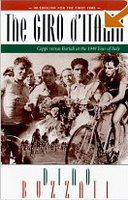 the 1949 giro d'italia stages whatever . . . the problem? classic piano racing. but here are some gems from the book that should explain why we race . . .
the 1949 giro d'italia stages whatever . . . the problem? classic piano racing. but here are some gems from the book that should explain why we race . . . much has been said, and written, about the black jersey "worn" by the rider in last place. although fictional in fact, daily prizes are given to that rider who is just barely still in the giro. great sentiment is attached, as he represents all those riders who race along in anonymity, doing what they love [ride a bike] for their team's leaders. one such rider, perennially, is antonio buelli. wuth his meager winnings from the odd sprint, or from the good graces of the champions, buelli buys a drum, and recruits a local boy from his home town, fits him with a braid-billed hat, and teaches him to drum, as in the circus for the high-wire acrobat, as the races [giro d'italia, lombardy, whatever] roll through town. little by little, over the years, buelli buys a trumpet from the giro, a cornet from a track series, and so forth, until his legs have assembled an actual brass band for his home town of cogoleto. when buelli finally retires from the peloton, he becomes the director, and is waiving the baton as the 1949 gior passes through. buzzati writes that it harkens of "cycling's golden era" of mad dashes on the track, breath-taking ascents of the alps, and so forth. and buelli was happy.
Tuesday, November 14, 2006
Sunday, November 12, 2006
and on another topic . . .

the 1949 giro d'italia stages 6, 7, 8, & 9: for the sprinters. although the giro began with a brutal mountain stage, it eventually settled into a battle of sprinters. with time bonuses unheard of today [the "new" intermediate sprint and finish both awarded bonuses of 1:00, :45 & :30], they allowed the maglia rosa to pass around the best of the day, taking some of the spotlight, but none of the expectations, away from the aces, coppi and bartali. the world was very different then. the giro passed through regions that had been ripped from the face of the earth just four years earlier by war. there was truly great cause for celebration as the race rolled by. and boy, did they roll: stage 6, 233 km in 7:07:50; stage 7, 298 km in 8:01:06; stge 8, 273 km in 8:19:07; stage 9, 249 km in 7:01:20. think of that: four days, four stages--1053 km in 30 hours 30 minutes, and that's for the winners. rules in effect at the time provided a cut-off of 20 minutes for every 100 km raced each day, meaning that some riders made the cut by putting in nearly 34 hours of RACING in four days. and note that, even though this was classic "piano" racing, the winner of stage 7, the longest of this year's edition, raced nearly 300 kilometers at OVER 37 k/h. on one stage, a group of 20 riders attempted to stick a break of over 200 kilometers. the 20 fell to three, as the hard-charging peloton cut their margin to under 2 minutes by the finish. overall, coppi sat in 10th, still a minute and two places ahead of bartali, as the dolomites awaited, as did all of italy. and well worth the wait. the prelude, a short, rest day-like 154 km roller to adjust the legs for the battles ahead, was run under growingly threatening skies. conditions of the day, and the tensions that built, were described with the same adjectives used for "the anglo-american landing in france during the last war." so fresh was d-day in their memories that historians had yet to give that battle its name. but conditions during the run up? the roads were "an endless array of shiny umbrellas, slippery asphalt, and this ridiculous transformation of the cyclists in their little waterproof tunics billowing, forming monstrous hunchbacks." and yet, one survived: corrieri, bartali's teammate, his mud covered face like a grotesque mask akin to "those african witch doctors all tattoed in white," who won by more than a minute. and yet, the preceeding 2296 kilometers are described as a mere prologue, insignificant to what will follow. fleeting fame? "glory is fragile, even in cycling: a merest trifle is enough to turn the trumpets in another direction." the 32d edition of the giro d'italia, the REAL giro, begins tomorrow.
here's something amusing, for some.
yesterday, i spent a few delightful and nastalgic hours at cyclocross farms, west of alleman. i had been there before, but this was moving day, a beginning. it is a splendid estate, the kind of place folks from iowa are fortunate to have in their experiences, whether as owner, in-law, child, grandchild, or hell, even friend and teammate. it has magical potential, this farm on the hill. the are countless out buildings. there is a panoramic 360 vista. neighboring farms are at a healthy, respectful distance. it is my hope that civilization never touches its boundaries. from the cool old unfinished basement with its nooks and crannies [perfect for hiding oneself, or one's treasures] to the upper floor rooms and their bird's nest vantages, to the kitchen stool that automatically transforms its occupant into a sun-drenched cat, contentedly purring, awaiting the promised tasty morsels, to the varied structures whose future uses are limited only by the imagination of those who reside at the farm. i wish them all the best, and look forward to many visits. to play, to share, to ride and race, to party, to reminisce, and to imagine. you oughta give it a try, too.
Saturday, November 11, 2006
 you want "epic?" then read on, race fans!
you want "epic?" then read on, race fans!back to the 1949 giro d'italia . . .stage 2, catania-messina, 163 km [flat] 1-s. maggini in 4:46:46 [ave 33.985 k/h]; 2-cottur, @ :30; 3-schaer, @ :45. stage 3, villa san giovanni-cosenza, 214 km [mountains] 1-desanti in 7:02:31 [ave 30.817]; 2-pasotti, @ 2:08; 3-l. maggini, @ 2:58. overall note: by virtue of a 15 second bonus for 3d in the stage KOM, f. coppi leads bartali by :15. stage 4, cosenza-salerno, 292 km [mountains] of bartali, he writes: "i am a little in awe of him: he pedals with a frown on his face, and he is never seen walking aroound, not even in the lobby or corridors of his hotel." of today's stage, he says "the frightful exertion of a stage like today's, 292 kilometers, almost all of them in the mountains, with a discouraging, uniterrupted succession of very steep climbs and descents that didn't let up for a minute; and then there was the violent storm that brought wind, cold, fog and rain, to say nothing of the depressing effect of the andscape, no doubt beautiful when the sun is out, but today, pallid, wild, and repulsive." of the towns along the route, some were "hanging lopsided on the lofty flanks of hte mountain, with a main street sloping at least 30 degrees in places, absolutely out of a fairytale." bartali flatted three times, and no one deigned to attack--the respect and fear for the champions. the result? a classic battle of the day, and for the ages: 1-f. coppi, in 9:59:21 [ave 29.3 k/h, plus a 1:00 bonus]; 2-leoni [:30 bonus]; 3-bartali [:15 bonus]. imagine this: coppi, leoni, and bartali SPRINTING after 10 hours in the mountains! coppi leads bartali by 1:00 in the overall after today's epic battle. think about THIS stage next time you want to describe any training ride, or even race, as epic, lance armstrong! the next day, deservedly, is a rest day in amalfi. bartali is not seen all day; he remains in his hotel room, as the rumors fly: ill? exhausted? still aching after his finish line crash in cosenza? he doesn't ride, he doesn't appear for his adoring fans. wtf? for bartali, "it almost seems as if--and perhaps his faith plays a part--he finds a sort of bitter comfort in suffering. and that he perceives in his misfortune a sign that heaven is talking to him." stage 5, salerno-naples, 161 km [flat] "bartali was dropped. on the pratola hill, 50 km out of slaerno, fausto coppi pedals with all his might." he is in a group of 12 riders, no teammates, hammering. no one dares to pull through, lest they offend bartali! bartali gets dropped on a rise of 585 meters. he loses a minute and a half. he flats. this could be the end of the line for the great one. but he changes his own wheel in ten seconds, and charges on, working entirely by himself--no ekimov, no mccartney to do the work, chasing coppi, who is also doing solo work, pulling, among others, the maglia rosa. the result? on the line, bartali not only catches on, he finishes 7th to coppis' 4th. neither gets a bonus, and the gap between the two remains 1:00.
an endorsement by the reverend: yesterday's cold wind and snow finally allowed me to try out my new specialized thermal deflect tights that i bought at rasmussen's. they are to replace my old battle wear from the days of the ordinary bike shop in iowa city, circa 1990s. have i really found a pair of tights that can keep me warm for 15 winters? YUP, sure did! gotta love those "strategically placed wind proof panels." they REALLY did the trick. i rode in them well past very cold yesterday, and they moved well, flexed where they were supposed to, and kept all the essentials toasty, including the knees! sweet!!! thanks, sterling. let's see, now, if they last until 2015.
it's moving day in ankeny, as team all9liberals pitches in for our own little habitat for humanity project. we are helping the rooby-dos move to cyclocross farms, lured by the promise of pork and beer. i put out the pitch for a group ride north, but the lack of responses makes me think THAT ain't gonna happen!
FLASH! final results from the tour of the southland: 13 Thurlow Rogers (Aus) Hilo Decorating 8.33; 14 Stephen Tilford (Aus) Hilo Decorating 9.12. combined age: approx 130.
Tuesday, November 07, 2006

stage 1, palermo to catanina, saturday, may 21, 1949
the giro is 4070 kiometers long; the first break moves at kilometer 2: four riders, joined soon by four more. included is mario fazio, who once lived in catania. fazio snags the one minute king of the mountain bonus, and is at the base of the last climb into the finishing city, when he dies, surrenders. but the approaching cyclist is a solo attacker, and he bursts into life, fresh. the two surviving original attackers drop their challenger, and fazio enters the stadium, with this thought: his "eyes were seeking one thing. she was there, level with the finishing line: mama's face, plump, soothing, full of kindness, tranquility and laughter. never had he seen her cry and laugh at the same time."
results after stage 1-fazio, 261 km in 7:47:55 [ave 33.5 k/h, 2:00 bonus]; 2d- carrea [@ 6 bike elnghts, :45 bonus]; 4-coppi, @ 2:21; 6-bartalli, s.t.
Monday, November 06, 2006
 a visit from the dark side
a visit from the dark side 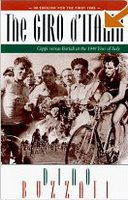
palermo, the evening of friday, may 20, 1949: the night before . . .
". . . the tires, so narrow, are as smooth and taut as young snakes."
"the solderiers are ready: ...each one has reaady his little secret weapons... with less imaginations, one racer has slipped a little tube of amphetamine sulphate into the pocket of his jersey, another has an invigorating infusion specially created for him by the town pharmacist."
"food bags? the director of each team has already prepared them... and then, the pep pilss, the dynamic concoctions capable of making a corpse jump out of the casket like an acrobat."
tomorrow, the 32d giro d'italia begins with...a mountain stage! a new twist for this edition of the giro: intermediate sprints, and time bonuses for mountain tops. and the time bonuses for the top three stage places? 2:00, 0:45, and 0:15. tune in tomorrow.
1--tour of the southland GC, after stage 2:
14 Stephen Tilford (USA) Hilo Decorating 1.16
37 Thurlow Rojers (USA) Hilo Decorating 2.26
[note: everybody know steve tilford, right? kicks ass. but thurlow rogers? in case you don't recall him, at masters nationals 45+ this year, he won the time trial and the road race, while only getting 2d in the crit. his teammate won. he then went on to become WORLD master time trial champ. for more history about steve tilford, since it's cross season, check here. scroll down; read some of the names there. how many are still racing on the PRO level? paul curley has been kicking my ass for years, to name one. to learn more about thurlow, read here.]
2--learn my secrets!
Sunday, November 05, 2006

i hit the weights yesterday, and although as you can clearly see in this photo i am favoring my broken right shoulder, i am already nearly at my april racing weight--and looking pretty god-damned buff, if i may say so myself. i intend to be a pesky little gnat on all the climbs, and undroppable on the flats. my power-to-weight ratio is incredible, according to my velodyne. i'm telling you right now, lou, tom, and the rest, that . . . well, just watch out.
by the way, lane, i LOVE the new team caps. they're distinctive, they stay on well at high speeds, and the snell-ansi people tell me they're certain to be approved. the new radios fit like oj.

palermo, the night of thursday, may 19, 1949 . . . today, the journalists and the others asseemble. buzzati, who has never covered a bike race before, admits he has never even SEEN a bike race. he observes those who, with him, will be the eyes for those who will experience this giro through their words. there's the one who considers this his vacation, and whose wife claims he looks younger when he returns home. there's another who "maintains the giro is an infernal machine designed to destroy" everyone associated with it. another "swears to the sublime purity of the giro" as "the last great phenomena of individual and collective mysticism...the racers knocking themselves out just for the Idea." "there is yet another who complains all day long, cursing his decision to accept the assignment" again, and yet whose behaviour and devotion causes buzzati to ask himself "how long has it been since i have seen anyone so happy?" the 32d giro d'italia begins the 21st of may, 1949.
Saturday, November 04, 2006

may 18, 1949 . . . wednesday before the start . . .
having transferred to a smaller vessel, the "citta di tunisi," one better able to navigate the narrower waterways as the floating giro contingent approaches stage1, they dock at naples harbor at 730 am, to a very small crowd of tifosi, each hoping to catch a glimpse of coppi or bartali. "youths in shabby clothes, a little old man, who was very well attired, a dozen street urchins [scugnizzi], and a couple of girls." slowly, amid shouts and supportive cries from the gathered fans, the largely unknown cyclists disembarked, already dressed for a training ride. the weave through the crowd, silently, holdong their bikes overhead. they gather in the plaza, mount their bikes, and set off on a 150 kilometer training ride, at 30-35 k/hr, to shake off the effects of sea travel. their destination? sorrento and amalfi, along the gulf road.
. . . . .
QUOTATION OF THE DAY
"I was tempted, I bought it, but I never used it."THE MOSTLY REV. GRANDPA KIM, a leading evangelical, on the SRAM gruppo he bought from a male escort.
Friday, November 03, 2006

Crédit Agricole's Patrice Halgand hasn't had a lucky 2006 season.
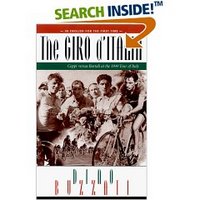
and now, for something completely different . . .
coppi versus bartali at the 1949 tour of italy
i spend an hour or more every morning reading over my morning grits--or oatmeal--, vitamins, and coffee. recently, i've re-read the entire harry potter collection [always do, in anticipation of the next release], and just yesterday i completed an intriguing novel entitled "the time traveller's wife," which i think was in some small part responsible for the funk i've been in lately . . .
. . . as i cope with the constant pain from my ribs, lung and shoulder, the effects the pain meds have had on my weird sleep situation [i'll do a thing about my narcolepsy at some point in the future; it's a good one, as folks who know it will attest], the effect the end of daylight savings time is having on all that, plus the change of season [which is generally a great time for me, but...] in light of my inability to ride like i want to, plus the struggle to get back into the shape that i was in just four f*cking weeks ago--end of rant. i'll reduce font size now for all that previous ranting . . .
. . . i thought i'd read something more likely to get me more cycling-oriented, and this is what i grabbed from my library. it's an accountby dino buzzati, who is described as the tome wolfe of italy, which is good enough for me, at least at 600 am for grits and coffee. the book was originally published as daily installations for italian newspapers, the only way folks could follow the race without actually being there every day. the accounts are gripping, and filled with homeric analogies and references.
i'll do it with brief, daily summaries of the race. they will NOT be as long as this, believe me.
and now, to our story . . .
it seems that, with the exception of the riders from the farms, unaccustomed to sea travel, the bulk of the giro party travels to the start aboard the ocean liner "saturnia." he imagines the dream a gregario [domestique] might have...of breaking away, ala landis, on an impossibly steep climb, and being allowing to so do, ultimately winning the stage, and eventually the giro, by over an hour. "but perhaps it's not like that. it may be that even these fantasies are denied him, for even in his sleep, he remains a poor gregario, simply sleeping, like a beast of burden . . . because he has no hopes. so then, it is better to just sleep. sleep and nothing else. and that he dreams of nothing."
tune in tomorrow...
Thursday, November 02, 2006
Wednesday, November 01, 2006
For the Amish Grieving Privately,
The Amish see death as a part of life. They will grieve...but they have more resignation. They will take this as something God ordained.
Since the Amish view death as a part of life, they may be better prepared to cope with a tragic death than most typical Americans. An expert on the Amish community, Donald Kraybill, supported this idea stating:
They have a huge family support network. They will not get angry. The pain will be deep, but they will not have to process it alone. They will cry, but it will be in private. And they will believe that it is God’s will and that it is nobody else’s business.
Very Private Grief
They're stoic. They're private. They're not given to public displays of emotion. They'll grieve privately. That doesn't mean they grieve any less.
Photographers have intruded on these families, capturing images of some of them crying. Amish traditions forbid photography. Thankfully, the news media is being kept away from the homes where the service is being held and airspace has been restricted so Television helicopters cannot film videos of the event from above. They will be allowed along the route where the buggies will drive to the ceremony for a short graveside service.
Faith, Community Support and Forgiveness
In the Amish community a death initiates an outpouring of social support both for the grieving family and for the community. Dozens of buggies line the driveways of the homes of the victims. Family and community members will do what is needed to support those who are grieving by cooking meals, watching other children or doing the farm work. By sharing the grief it is no longer just the grief of a family, but the grief of the entire community. With faith and community support the families will cope with the loss. Perhaps most remarkable for outsiders is the ability of the Amish community find solace within their faith, to grieve together and believe it was all part of God’s plan. Because of their faith they are able to pick up the pieces and keep going.


